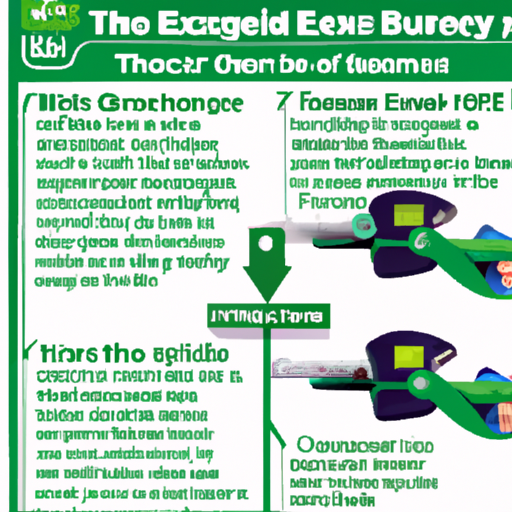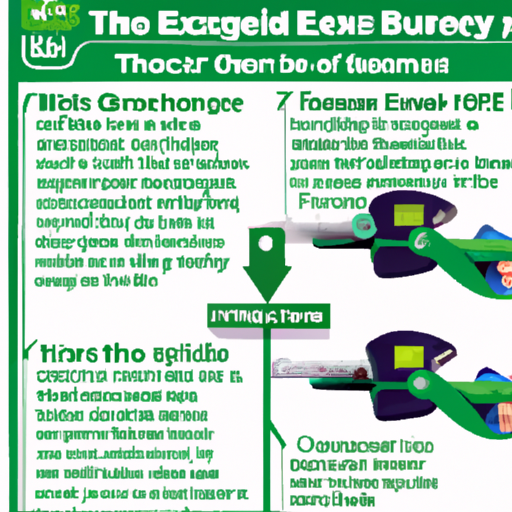Have you ever wondered how to use a battery-powered hedge trimmer safely? We know it can be a bit intimidating to handle a sharp, powerful tool like a hedge trimmer, but with the right knowledge and precautions, you can operate it safely and efficiently. In this article, we will guide you through the process and provide you with essential tips to ensure a smooth and accident-free trimming experience. So, if you want to learn the dos and don’ts of using a battery-powered hedge trimmer, keep reading!
First and foremost, it’s crucial to familiarize yourself with the specific safety features and instructions of the hedge trimmer you are using. This information can usually be found in the user manual that comes with the tool. Reading the manual will help you understand how to properly handle the trimmer and any precautions you need to take.
When operating a battery-powered hedge trimmer, it’s important to wear appropriate protective gear such as safety goggles, gloves, and ear protection. These items will protect you from debris, vibrations, and potential hearing damage. Additionally, make sure to wear sturdy and non-slip footwear to maintain your balance while using the trimmer.
To ensure a safe trimming experience, always inspect your work area before you start. Remove any debris, rocks, or other obstacles that could potentially cause you to trip or lose balance. Also, be cautious of any power lines or overhead obstructions that you may encounter while trimming. It’s better to be safe than sorry!
In conclusion, using a battery-powered hedge trimmer can be both efficient and safe if you follow the necessary precautions. By familiarizing yourself with the equipment, wearing appropriate protective gear, and inspecting your work area beforehand, you can confidently operate the trimmer without any unnecessary risks. Remember, safety should always be your top priority when handling any power tools. Operating a battery-powered hedge trimmer can be an efficient and convenient way to maintain your hedges and shrubs. However, it is crucial to prioritize safety while using this powerful tool. In this guide, we will discuss the basic safety precautions, battery handling and charging, trimming techniques, dealing with obstacles, maintenance and storage, working near power sources, avoiding personal injury, handling emergencies, and considering environmental factors. By following these guidelines, you can ensure a safe and enjoyable experience with your hedge trimmer.
Basic Safety Precautions
Wear protective gear
Before starting any task with your hedge trimmer, it is essential to wear the appropriate protective clothing and gear. We recommend wearing safety glasses to protect your eyes from flying debris, ear protection to prevent hearing damage due to the trimmer’s noise, and sturdy work gloves to provide a secure grip and protect your hands from cuts and scratches. Additionally, consider wearing long pants, a long-sleeved shirt, and steel-toed boots for added protection.
Inspect the trimmer before use
Inspecting your hedge trimmer before each use is crucial to ensure its proper functioning and safety. Check for any damages or loose parts that may affect its performance. Examine the blades for dullness, chips, or bends, as this can affect the quality of your trimming and potentially lead to accidents. Ensure that the trimmer’s safety guard is intact and functioning correctly.
Ensure a clear work area
Before you begin trimming, it is vital to clear the work area of any potential hazards or obstructions. Remove any stones, branches, or debris that may cause you to trip or lose your balance while operating the trimmer. Keep children, pets, and bystanders at a safe distance to prevent accidents. Clearing the work area also ensures a smoother and more effective trimming process.
Battery Handling and Charging
Follow manufacturer’s instructions
When it comes to handling and charging the battery for your hedge trimmer, it is crucial to follow the manufacturer’s instructions. Each trimmer may have specific requirements and guidelines for battery usage and maintenance. Pay attention to the recommended charging times, temperature ranges, and storage instructions to maximize the lifespan of your battery and reduce the risk of accidents.
Use a designated charging station
To ensure proper battery safety, always charge your battery in a designated charging station or area. Avoid charging the battery near flammable materials or in high-temperature environments. It is also essential to use only the charger provided by the manufacturer or a compatible charger specifically designed for your trimmer’s battery. Using an incorrect charger can result in overheating or damage to the battery.
Avoid overcharging
Overcharging your trimmer’s battery can lead to reduced battery life and potential safety risks. Once the battery is fully charged, disconnect it from the charger promptly. Avoid leaving the battery connected to the charger for extended periods, as this can lead to overcharging. Regularly monitor the battery’s charge level and disconnect it as soon as it reaches the desired level to ensure optimal performance.

Trimming Techniques
Hold the trimmer correctly
Properly holding the trimmer is essential for maintaining control and balance. Hold the trimmer with both hands, with one hand on the front handle and the other on the rear handle. Maintain a firm and comfortable grip, ensuring that your hands are neither too close to the blades nor too far apart. Distribute the weight of the trimmer evenly to reduce strain on your arms and prevent fatigue.
Trim in smooth, controlled motions
When trimming hedges and shrubs, it is crucial to maintain smooth and controlled motions. Avoid jerky or erratic movements, as this can lead to uneven and unsightly cuts. Instead, move the trimmer steadily along the hedge, allowing the blades to do the work. Take your time and focus on achieving clean, even cuts. If necessary, make multiple passes to achieve the desired shape and length.
Avoid cutting above shoulder height
To ensure your safety and maintain control, avoid cutting above shoulder height. Trimming above this level increases the risk of losing balance and potentially injuring yourself. If you need to cut higher branches or areas, consider using a ladder or an extension tool specifically designed for your hedge trimmer. Always prioritize stability and balance when operating the trimmer.
Dealing with Obstacles
Identify potential obstacles
Before you begin trimming, carefully identify any potential obstacles that may hinder your progress or pose a safety risk. Look for rocks, stones, tools, or other objects that may accidentally come into contact with the trimmer blades. By identifying these obstacles beforehand, you can take the necessary precautions to work around them safely and efficiently.
Clear debris and obstacles before trimming
To ensure a smooth and uninterrupted trimming process, it is crucial to clear away any debris or obstacles in your work area. Remove smaller branches, fallen leaves, or rocks that may obstruct your path. Clearing away debris also helps prevent the trimmer blades from becoming jammed or damaged during operation. Regularly check the area for new obstacles that may have fallen or appeared since you started trimming.
Handle thick branches with care
When encountering thick branches, exercise caution and use appropriate trimming techniques. Avoid forcing the trimmer blades through thick branches, as this can damage the blades or cause the trimmer to lose balance. Instead, make incremental cuts, starting from the outer edges of the branch. Gradually work your way towards the center, allowing the blades to cut through the branch effectively and safely.

Maintenance and Storage
Clean the trimmer after each use
Proper maintenance of your hedge trimmer is essential for optimal performance and longevity. After each use, take the time to clean the trimmer thoroughly. Remove any debris, grass clippings, or sticky residue that may have accumulated on the blades or the trimmer’s body. Regular cleaning not only enhances the trimmer’s efficiency but also prevents the buildup of corrosive materials that can affect its durability.
Inspect and replace damaged parts
Regularly inspect your trimmer for any signs of damage, such as worn or dull blades, loose parts, or frayed cords. A damaged trimmer can compromise your safety and affect the quality of your trimming. If you notice any issues, promptly replace or repair the damaged parts to ensure the trimmer’s proper functioning. Consult the manufacturer’s guidelines or a professional if you are unsure about the replacement process.
Store the trimmer properly
Proper storage of your hedge trimmer is crucial for maintaining its safety and longevity. After each use, clean the trimmer and ensure it is dry before storing it in a clean and dry area. Ideally, store the trimmer in a protective case or cover to shield it from dust, moisture, and potential damage. Keep the trimmer out of reach of children and pets to prevent accidents or unauthorized use.
Working Near Power Sources
Keep the trimmer away from electrical cords
When operating your hedge trimmer, be mindful of nearby electrical cords or outlets. Keep the trimmer’s cord and the power source cord separated to avoid entanglement or accidental contact. Trimming near electrical cords can pose a significant safety risk, as they can become damaged or frayed, leading to electrical shock or fires. Be cautious and maintain a safe distance from power sources while operating the trimmer.
Stay clear of power lines
When working in outdoor areas, be aware of nearby power lines. Maintain a safe distance from power lines at all times to avoid potential electrical hazards. Accidental contact with power lines can cause severe injury or even death. If you are unsure about the proximity of power lines to your work area, consult a professional or contact the local utility company for guidance.
Be cautious around water sources
Water and electricity do not mix. When operating a hedge trimmer, exercise caution when working near water sources, such as sprinklers, swimming pools, or ponds. Avoid using the trimmer on wet or damp hedges, as this can increase the risk of electrical shock. If it starts to rain while you are trimming, promptly stop the task and move to a safe, dry area until the weather improves.
Avoiding Personal Injury
Stay focused and avoid distractions
Maintaining focus while operating a hedge trimmer is crucial for your safety and the quality of your work. Avoid distractions, such as phone calls or conversations, that may divert your attention from the task at hand. Remember to stay alert and aware of your surroundings. By staying focused, you can anticipate potential hazards and react appropriately, reducing the risk of accidents.
Keep hands and feet clear of the blades
A common cause of injuries while using a hedge trimmer is accidentally coming into contact with the blades. Always keep your hands and feet clear of the trimmer’s cutting area to prevent accidental cuts or amputations. Maintain a safe distance between your body and the trimmer, allowing the blades to do their job without endangering your limbs. Never attempt to clear debris or adjust the trimmer while it is running.
Never work on unstable surfaces
Operating a hedge trimmer on unstable or uneven surfaces can lead to loss of balance and potential injuries. Always ensure that you are working on a stable and level platform, especially when using ladders or other elevated platforms. If the ground is uneven or slippery, consider postponing the trimming task until you can create a safer work environment. Your safety should always be the top priority.
Handling Emergencies
Know how to stop the trimmer in an emergency
In the event of an emergency, it is crucial to know how to stop the trimmer quickly and safely. Familiarize yourself with the trimmer’s emergency stop mechanism and practice using it before starting any trimming tasks. This knowledge will enable you to act swiftly in case of an unexpected event, such as the trimmer becoming jammed or losing control.
Follow first aid protocols for injuries
Despite taking all necessary precautions, accidents can still happen. Therefore, it is vital to know basic first aid protocols for injuries that may occur during hedge trimming. If you or someone else experiences a minor cut or scrape, clean the wound and apply an antiseptic ointment and a bandage. For more severe injuries, such as deep cuts or amputations, seek immediate medical assistance.
Never attempt repairs while the trimmer is on
If your hedge trimmer malfunctions or requires repairs, always ensure that it is turned off before attempting any maintenance or repairs. Never try to fix or adjust any parts while the trimmer is running, as this can lead to serious injury. Consult the manufacturer’s instructions or contact a professional for any repair work beyond your expertise.
Environmental Considerations
Dispose of batteries properly
When the time comes to replace your trimmer’s battery, it is essential to dispose of it responsibly. Batteries contain hazardous substances that can harm the environment if not disposed of properly. Check with your local waste management authority or recycling centers for guidelines on how to dispose of batteries safely. Opt for recycling options that ensure proper disposal and minimize the environmental impact.
Avoid trimming certain plants and trees
While using your hedge trimmer, be mindful of the plants and trees you choose to trim. Some species may require specific pruning techniques or may be best left untouched. Research the plants in your garden or consult with a professional to determine the appropriate trimming methods for each species. This consideration ensures their health and longevity.
Consider noise pollution
Battery-powered hedge trimmers are generally quieter than gas-powered models, but they still produce noise during operation. Be considerate of your neighbors and the local noise regulations when operating your trimmer. If possible, plan your trimming tasks during daytime hours or when noise disturbances are minimized. Maintaining a respectful noise level contributes to a harmonious neighborhood and positive community relationships.
Conclusion
Operating a battery-powered hedge trimmer can be a satisfying and efficient way to maintain the beauty of your garden. However, never compromise on safety while using this powerful tool. By following the basic safety precautions, handling and charging the battery correctly, employing proper trimming techniques, and maintaining the trimmer adequately, you can ensure a safe and enjoyable experience with your hedge trimmer. Remember to prioritize your safety, practice responsible environmental stewardship, and seek professional assistance when necessary. With these guidelines in mind, you can confidently embark on your hedge trimming tasks, knowing that you are operating your battery-powered hedge trimmer safely and effectively.
